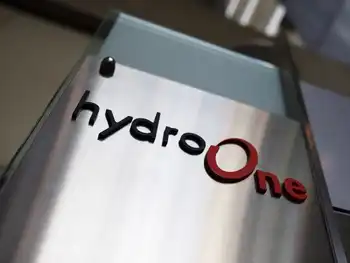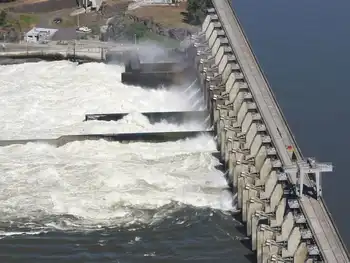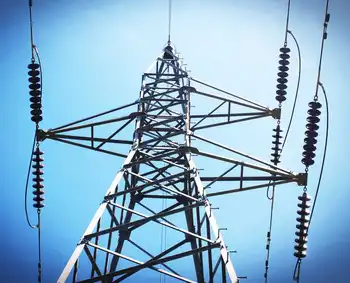9 states in plan to cut emissions by power plants
NEW YORK, NEW YORK - Officials in New York and eight other Northeastern states have come to a preliminary agreement to freeze power plant emissions at their current levels and then reduce them by 10 percent by 2020, according to a confidential draft proposal.
The co-operative action, the first of its kind in the nation, came after the Bush administration decided not to regulate the greenhouse gases that contribute to global warming. Once a final agreement is reached, the legislatures of the nine states will have to enact it, which is considered likely.
Enforcement of emission controls could potentially result in higher energy prices in the nine states, which officials hope can be offset by subsidies and support for the development of new technology that would be paid for with the proceeds from the sale of emission allowances to the utility companies.
The regional initiative would set up a market-driven system to control emissions of carbon dioxide, the main greenhouse gas, from more than 600 electric generators in the nine states. Environmentalists who support a federal law to control greenhouse gases believe that the model established by the Northeastern states will be followed by other states, resulting in pressure that could eventually lead to the enactment of a national law.
California, Washington and Oregon are in the early stages of exploring a regional agreement similar to the Northeastern plan. The nine states in the Northeastern agreement are Connecticut, Delaware, Maine, Massachusetts, New Hampshire, New Jersey, New York, Rhode Island and Vermont. They were brought together in 2003 by a Republican governor, George E. Pataki of New York, who broke sharply and openly with the Bush administration over the handling of greenhouse gases and Washington's refusal to join more than 150 countries in signing the Kyoto Protocols, the agreement to reduce emissions that went into effect earlier this year.
Mr. Pataki, who may be considering a run for the Republican nomination for president, has refrained from criticizing President Bush directly, but he has repeatedly said that the states need to act on their own even if the Bush administration has not made the issue a priority.
Preliminary details of the region's emission reduction goals were included in a confidential memo circulated among officials of all nine states that was given to The New York Times by a person who supports the enactment of national legislation to control emissions, but who did not want to be identified because he was not authorized to have the memo.
Andrew Rush, a spokesman for Governor Pataki, declined to comment on the draft because it was not a final document. However, he said, "a tremendous amount of progress has been made and we look forward to continuing to work with the other states so that we can reach a final agreement that will build on the governor's strong record of protecting the environment and reducing harmful emissions."
Samuel Wolfe, assistant commissioner for the New Jersey Department of Environmental Protection, who has been actively involved in the negotiations, said that there is still work to be done on the proposal but that "the states are working very productively to resolve the issues and we have very high hopes of getting a resolution through to all the states by the end of September."
In a statement, James L. Connaughton, chairman of the White House Council on Environmental Quality, tried to put the states' initiative in a positive light. "We welcome all efforts to help meet the president's goal for significantly reducing greenhouse gas intensity by investing in new, more efficient technologies," he said.
In recent years, New York and other Northeastern states have aggressively tried to reduce power plant emissions. Several have joined together to sue coal-fired power plants in Midwestern states that produce sulfur dioxide and nitrogen oxide that drift across state borders and cause acid rain in the Northeast.
The Northeastern region is itself a substantial producer of greenhouse gases. Environmental groups calculate that the region's carbon dioxide emissions are roughly equivalent to those of Germany.
While any reductions achieved in the region would be significant, environmentalists believe that the real importance of the cooperative effort is in the example it sets for other states.
"We're not going to solve the problem of global warming in the Northeastern states," said Dale S. Bryk, a senior attorney with the Natural Resources Defense Council who has been watching the regional effort since it was proposed by Governor Pataki in a letter to the other governors in April 2003. "but we're showing that we have the American ingenuity to do this and we're setting a precedent in terms of the design of the program."
As outlined in the draft, the regional carbon dioxide control plan would set specific caps on emissions that would drop over time.
The hope is that by providing long-range incentives for the electric generating companies to comply, the program will make improvements more cost-effective.
Emissions would be capped at 150 million tons of carbon dioxide a year, a figure that is about equal to the average emissions in the highest three years between 2000 and 2004. Each of the nine states would have its own cap. New York's, at 65.6 million tons, would be the largest. Vermont's would be the smallest, with 1.35 million tons.
The caps would be enforced starting in 2009. By that time, restricting emissions to levels prevailing now would, in effect, require a reduction of emissions relative to power output, because electric generation is expected to increase between now and then. The 150 million-ton cap would be sustained through 2015, when reductions would be required, reaching 10 percent in 2020. The Kyoto protocol freezes emissions at the 1990 level and imposes a 7 percent reduction in 2012.
Environmentalists say there are too many variables involved to directly compare the two programs, but they are believed to achieve roughly the same kind of carbon reductions. However, some environmentalists are disappointed with the draft plan. They argue that much deeper cuts were achievable.
"Its good that they are going to be talking about actual reductions," said Robert J. Moore, executive director of Environmental Advocates of New York. "However, the targets that are being contemplated, though a positive step, are somewhat less than ambitious."
Gavin J. Donohue, president of the Independent Power Producers of New York, said that meeting the proposed caps "would be very difficult" for electric generators in New York, especially now that the price of oil has soared.
Mr. Donohue, who once worked for Governor Pataki in the Department of Environmental Conservation, said that his principal concern was assuring that the limits will not put electric generators in New York and the other states at a competitive disadvantage with states that were not constrained.
The Bush administration's rejection of the Kyoto Protocols has caused deep divisions nationwide, with many local governments attempting to force the administration to taking action by passing their own carbon dioxide rules.
Earlier this year, for example, the mayors of more than 130 cities, including New York and Los Angeles, joined in a bipartisan coalition to fight global warming on a local level by agreeing to meet the emissions reductions contained in the international pact.
One part of the proposal that is not yet final deals with the sale of emission allowances under a cap-and-trade system. Such systems allow generating companies that have not used all of their emission quotas to sell the right to emit more pollution to competitors. In this way, the total amount of pollution can be controlled, while the economic viability of the companies is protected.
When this system was used in Europe, the carbon dioxide allowances were given to the generating companies. The Northeastern states are considering withholding some allowances and selling them to the generating companies.
Related News

Key Ontario power system staff may end up locked down at work sites due to COVID-19, operator says
TORONTO - A group of personnel key to keeping Ontario's electricity system functioning may end up locked down in their control centres due to the COVID-19 crisis, according to the head of the province's power operator.
But that has so far proven unnecessary with a change-up in routine, Independent Electricity System Operator CEO Peter Gregg said.
While about 90 per cent of staff were sent to work from home on March 13, another 48 control-room operators deemed essential are still going into work, Gregg said in an interview.
"We identified a smaller cohort of critical operations room staff that need to go in…




